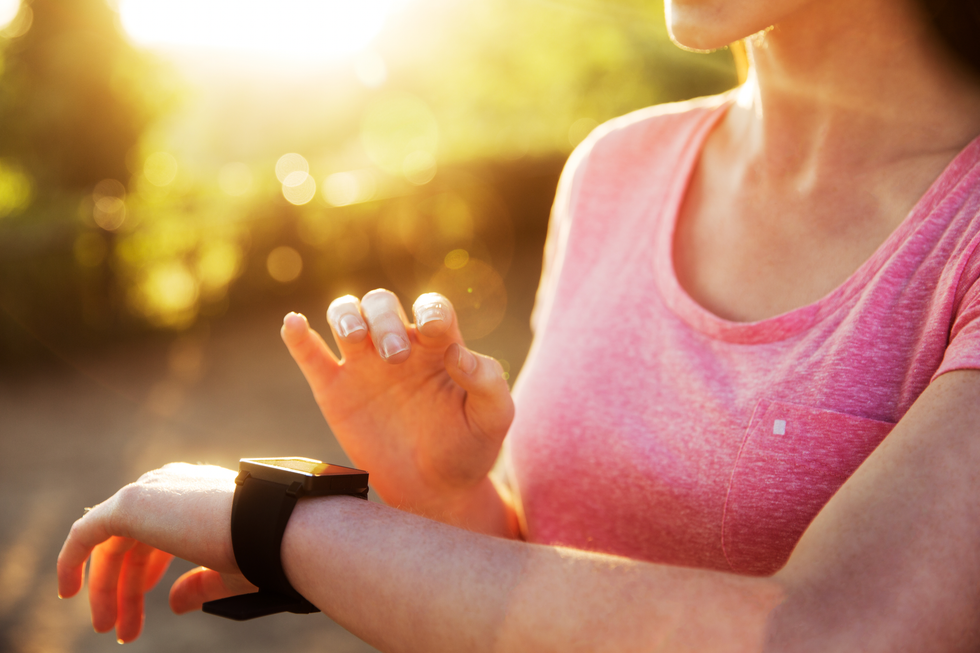Walking is one of the best workouts during perimenopause
GETTY
GB News is running a diet series giving you the best workout plans and diet advice to help you burn fat and transform your body. This week, we look at the best way to workout during menopause
Don't Miss
Most Read
Trending on GB News
Many unpleasant symptoms come with perimenopause, with weight gain common in a lot of women.
GB News exclusively shares the best ways to move your body at this stage of life to help combat unwanted change on the scales.
Luckily, women do not need to spend hours at the gym to see results, according to exercise physiologist, VP of operations at Gait Happens Dr Milica McDowell.
She told GB News walking is one of the best ways to lose weight and relieve other symptoms of menopause.
 Walking is a great way to burn extra calories GETTY
Walking is a great way to burn extra calories GETTYWalking workout
Dr McDowell said: "Engaging in regular walking can be an effective way to alleviate many menopausal symptoms and improve a woman's overall wellbeing. Walking is a low-impact aerobic exercise which helps in maintaining a healthy body weight, which can mitigate hot flashes and improve sleep patterns.
"Walking also boosts mood by releasing endorphins, the body's natural stress relievers, thus reducing anxiety and depression. Additionally, walking strengthens bones and muscles, improving balance and reducing the risk of osteoporosis. By enhancing cardiovascular health, walking can lower the risk of heart disease, which becomes more prevalent post-menopause."
How to add walking into your routine
Walking is a relatively easy activity to incorporate day to day - you can stroll into work, take the dog for an extra walk or enjoy a day exploring the British countryside. Every step counts and the average person will burn around 300 calories in an hour of walking.
The expert recommended building up to longer walks by increasing how much you currently walk by 50 per cent a day, or adding 2,500 steps.
Dr McDowell said: "There's no denying the health benefits of a walking practice during menopause so how does one go about incorporating walking into a daily routine? The good news is it's easy to adopt a simple yet powerful walking practice which will help to ease the transition through menopause and promote long-term health.
"Habit building takes around 8 to 12 weeks to become a regular part of your weekly routine and can demonstrate profound health benefits if you stick with it for six months.
"Starting small is a great way not to get overwhelmed if walking is a new addition to your routine. First, you'll need shoes that are either for running or walking. Don't walk in improper footwear, it can cause foot, lower body and back pain issues. Secondly, set measurable goals.
"Declaring you'll walk 8,000 steps a day, seven days a week is a sure way to become disgruntled with your new walking practice, as that's biting off a huge commitment from ground zero.
"An ideal prescription for adopting a walking program is to shoot for three days a week, with either a 50 per cent increase or an additional 2,500 steps above your current baseline. Numerous research studies demonstrate that this amount of walking can noticeably impact symptoms of menopause and cause a positive shift in women's lives."
Dr McDowell added a great way to stay motivated when walking is to join a club or encourage friends and family to join you. She concluded: "One final note, additional bonus points are added if you invite your friends to participate in your walking practice to help counteract their menopause symptoms, as well.
"Building community is a proven way to reduce symptoms of irritability, mental fog, depression and anxiety; so educate your gal pals to come along on your new path of movement to increase your wellness and vitality."
Balanced Body education director Joy Puleo, NPCP, ACSM, also shared the benefits of exercise during perimenopause.
LATEST DEVELOPMENTS

Anyway you move your body contributes to weight loss
GETTY
She said strength training and Pilates are both good options, but any movement that gets your heart rate up will help with weight management.
She told GB News: "Get your blood pumping – from walking, to light jogging, to cycling, to dancing, get up and move.
"All rhythmic movement matters and accumulates if you have 10 minutes for a walk at work, take it. Getting outside, changing your perspective, and moving will work wonders on your mind as well as your body.
"When it comes to cardio, do not overthink, just move. Longer duration, lower intensity is as great as short and hard."
She said slimmers can mix up how they exercise so it is not a repetitive task. Joy added: "Variety is the spice of life here. Add dancing, mowing the lawn and hiking as these are all excellent ways to change your environment, vary your effort and, quite frankly, to enjoy the process."
Looking for more ways to stay fit? GB News shares the best moves to improve flexibility and strengthen muscles in your 40s, 50s and 60s. Or follow our workout plan on how to slim down if you only have 15 minutes.








